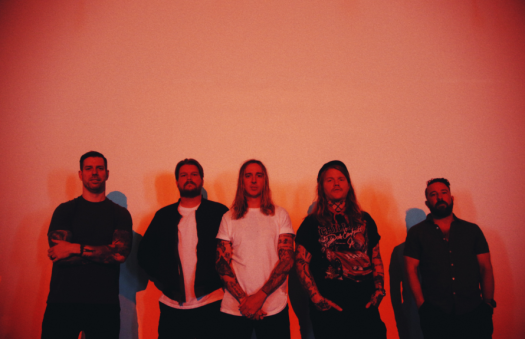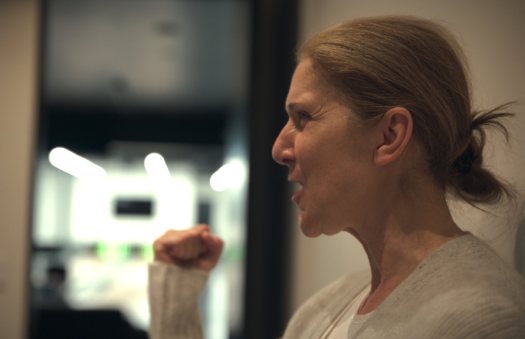The Tayos Caves of Ecuador are steeped in myth and history. Its landscape draws many seeking a special connection to its unique, natural wonders.
After his last album, Jon Hopkins felt it was time to reset, and find inspiration in another source. The UK producer made the decision to take a different direction with his next record, eschewing the beats and expansive ambient IDM of 2013's Immunity and 2018's psychedelic-leaning Singularity for something introspective and egoless, with raw, emotional honesty. It was from this that an opportunity arose to fulfill this purpose, bringing Hopkins to the Tayos Caves on a creative expedition that proved life-changing.
The expedition let Hopkins shift from a more abstract approach that sometimes unveiled meaning in time, to creating work inspired by a direct, personal experience. Hopkins wanted to create a narrative that gave the feeling of being in the caves, and, for anyone who hasn't been there, the results sound like he's excelled and then some. Two years passed between the Ecuador trip and writing Music for Psychedelic Therapy. "I really believe that there's so much to be said for letting an idea percolate," Hopkins has said of its process, and it's clearly had a profound effect.
There's an amazingly dreamlike sense to experiencing the LP in full immersion, enhanced by 7RAYS' woodland surround and multi-dimensional synthesis. Throughout the cave compositions, Hopkins improvised exquisite and processed flourishes over field recordings made by Mendel Kaelen, a neuroscientist and founder and CEO of psychedelic therapy music app Wavepaths, who was on the expedition with him.
In a tradition used in many spiritual and healing practices, the album's opening "Welcome" grows slowly from a struck singing bowl into fluorescent drones and bubbling keys, drifting the listener towards the cave entrance on a chiming, sparkling astral plane. "Tayos Caves, Ecuador i" follows, and its massiveness is felt. As if floating through them, the details are vivid and tranquil. A distant lone bird sings dolefully as a sustained hum, created by a crystal ball's natural reverberations, lines the chasm and water falls all around. Further along, a melancholic melody trembles through the abyss like a healing heart, lulling the listener. In "Tayos Caves, Ecuador ii," things have gotten deeper. It's felt in the immenseness of the drone and its deep space aura, recalling some of past collaborator Brian Eno's work, with sound signals being cast off into awe-inducing nothingness.
Part "iii" follows with whirring and strings that intensify around a sustained wistful counterpoint before emerging from the cave to a world abuzz with colour and life. Here, violins sing high notes and chirp among birds in their own rhythm, evolving into a softly shimmering orchestra. In their ascent back to the rainforest, Hopkins noticed the different choruses and layers of insects and birds and how they would change notes in unison, by their own internal logic, and attempted to mimic this unknown harmony by imbuing the song's instruments with their own unpredictable unity.
Much of the collection has a trance-inducing effect, like the engulfing and glittering "Deep in the Glowing Heart" and "Ascending, Dawn Sky." It's an ingenious record of expertly woven environmental music, always in a state of enchanting motion, and as one dedicated to being Music for Psychedelic Therapy, it will surely succeed on that front for many. But it also succeeds in being, as it was described pre-release, not quite classical, drone or ambient, but an effort that draws from all three.
Hopkins shapes each element with refined, instinctual care – nothing distracts or lingers for too long – creating comforting spaces for the mind to wander, get lost, or find itself in. There's a feeling of flowing through serene, yet vital space, with each sound possessing its own special place and magic, acting as tiny guides on this spiritual odyssey.
For the first single released from the album, "Sit Around the Fire," Hopkins collaborated with ceremony guide and producer East Forest to score part of a '70s talk by late spiritual and psychedelic luminary Ram Dass. The song, which closes the LP, is the only one to feature words, and feels like the perfect end to this meditative journey.
Music for Psychedelic Therapy is a magical union of nature and creativity, a space where the mind can open, and do so with transportive beauty. Over pensive keys, Dass speaks to expanding love and celebrating the inner flame – the spirit – within everyone, the need to sustain it, and the need to just be, summing up a part of humanity's shared experience with the album's final lines: "all we're going to do for eternity, is sit around the fire." It's a simple, remarkable close to a work of such depth, and one that's also a beginning.
(Domino)After his last album, Jon Hopkins felt it was time to reset, and find inspiration in another source. The UK producer made the decision to take a different direction with his next record, eschewing the beats and expansive ambient IDM of 2013's Immunity and 2018's psychedelic-leaning Singularity for something introspective and egoless, with raw, emotional honesty. It was from this that an opportunity arose to fulfill this purpose, bringing Hopkins to the Tayos Caves on a creative expedition that proved life-changing.
The expedition let Hopkins shift from a more abstract approach that sometimes unveiled meaning in time, to creating work inspired by a direct, personal experience. Hopkins wanted to create a narrative that gave the feeling of being in the caves, and, for anyone who hasn't been there, the results sound like he's excelled and then some. Two years passed between the Ecuador trip and writing Music for Psychedelic Therapy. "I really believe that there's so much to be said for letting an idea percolate," Hopkins has said of its process, and it's clearly had a profound effect.
There's an amazingly dreamlike sense to experiencing the LP in full immersion, enhanced by 7RAYS' woodland surround and multi-dimensional synthesis. Throughout the cave compositions, Hopkins improvised exquisite and processed flourishes over field recordings made by Mendel Kaelen, a neuroscientist and founder and CEO of psychedelic therapy music app Wavepaths, who was on the expedition with him.
In a tradition used in many spiritual and healing practices, the album's opening "Welcome" grows slowly from a struck singing bowl into fluorescent drones and bubbling keys, drifting the listener towards the cave entrance on a chiming, sparkling astral plane. "Tayos Caves, Ecuador i" follows, and its massiveness is felt. As if floating through them, the details are vivid and tranquil. A distant lone bird sings dolefully as a sustained hum, created by a crystal ball's natural reverberations, lines the chasm and water falls all around. Further along, a melancholic melody trembles through the abyss like a healing heart, lulling the listener. In "Tayos Caves, Ecuador ii," things have gotten deeper. It's felt in the immenseness of the drone and its deep space aura, recalling some of past collaborator Brian Eno's work, with sound signals being cast off into awe-inducing nothingness.
Part "iii" follows with whirring and strings that intensify around a sustained wistful counterpoint before emerging from the cave to a world abuzz with colour and life. Here, violins sing high notes and chirp among birds in their own rhythm, evolving into a softly shimmering orchestra. In their ascent back to the rainforest, Hopkins noticed the different choruses and layers of insects and birds and how they would change notes in unison, by their own internal logic, and attempted to mimic this unknown harmony by imbuing the song's instruments with their own unpredictable unity.
Much of the collection has a trance-inducing effect, like the engulfing and glittering "Deep in the Glowing Heart" and "Ascending, Dawn Sky." It's an ingenious record of expertly woven environmental music, always in a state of enchanting motion, and as one dedicated to being Music for Psychedelic Therapy, it will surely succeed on that front for many. But it also succeeds in being, as it was described pre-release, not quite classical, drone or ambient, but an effort that draws from all three.
Hopkins shapes each element with refined, instinctual care – nothing distracts or lingers for too long – creating comforting spaces for the mind to wander, get lost, or find itself in. There's a feeling of flowing through serene, yet vital space, with each sound possessing its own special place and magic, acting as tiny guides on this spiritual odyssey.
For the first single released from the album, "Sit Around the Fire," Hopkins collaborated with ceremony guide and producer East Forest to score part of a '70s talk by late spiritual and psychedelic luminary Ram Dass. The song, which closes the LP, is the only one to feature words, and feels like the perfect end to this meditative journey.
Music for Psychedelic Therapy is a magical union of nature and creativity, a space where the mind can open, and do so with transportive beauty. Over pensive keys, Dass speaks to expanding love and celebrating the inner flame – the spirit – within everyone, the need to sustain it, and the need to just be, summing up a part of humanity's shared experience with the album's final lines: "all we're going to do for eternity, is sit around the fire." It's a simple, remarkable close to a work of such depth, and one that's also a beginning.




